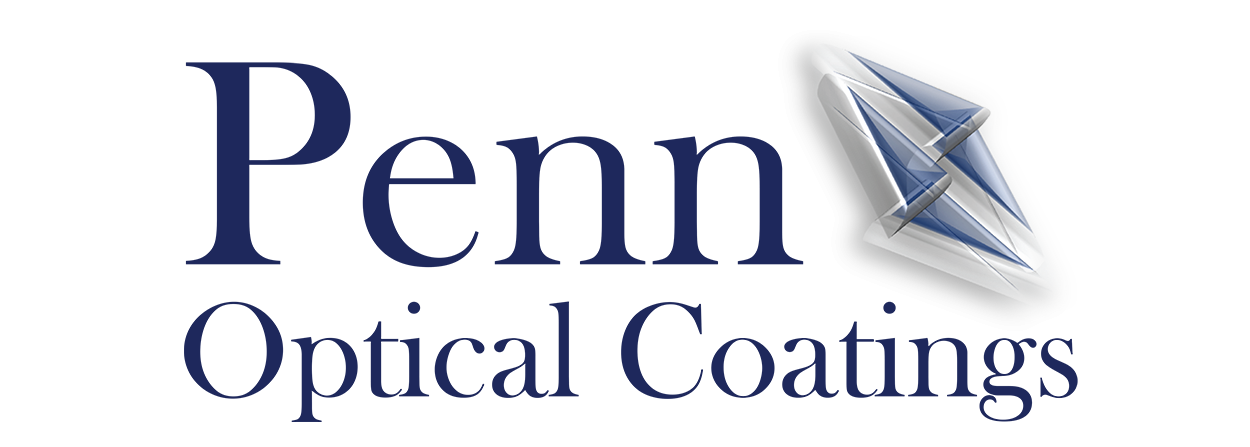Metallic Mirror Coatings for Maximum Broadband Reflection
For applications requiring broadband reflection, optical engineers have choices when designing mirror coatings deposited onto a glass or metal substrate. While there are various metals to choose from, the biggest overall advantages of metal coatings remain the same: uniform reflectivity over a wide spectral range and minimizing reflectivity losses with optimized coating designs and processes.
Metallic Coatings
In standard mirrors and prism configurations, light bounces off the back of the glass. To achieve highly reflective precision coatings, thin film optical coaters typically utilize a bonding layer to adhere the metal to the front surface prior to depositing the metallic coating. Internal reflectors do not typically use a bonding layer to avoid compromising transmittance and reflectivity requirements.
Metallic coatings are often protected and enhanced by adding a dielectric material such as amorphous SiO2 (silica) or Si3N4 (silicon nitride), which protects the coating against oxidation (tarnish) and scratches. Such enhanced or protected mirror coatings are more abrasion-resistant but tend to be more sensitive than dielectric mirrors. This implies that greater care is required in cleaning metal-coated optics. Metallic mirrors are also less sensitive to humidity and corrosive gases.
Mirror Coating Types
The majority of metal coatings are made of aluminum, silver, and gold. Less common materials include beryllium, copper, and nickel/chrome alloys. Metallic coatings are used in the visible and IR part of the spectrum up to 20 μm. Metal-coated mirrors can also work for extremely long infrared wavelengths. In that region, it is difficult to work with dielectric mirrors due to their strong absorption. Coatings are designed specifically to meet end-use requirements in the specified wavelength range.
Aluminum Mirrors
Protected aluminum mirrors, those with a SiO2 coating for example, are used for many broadband applications in the VIS and UV spectral region, reaching reflection levels well above 90% in the visible but often below 90% in the UV (similar to bare aluminum). Compared with silver mirrors, such enhanced aluminum mirrors have a lower tendency for tarnishing when exposed to humidity.
Silver Coatings
Protected silver coatings (again usually with a SiO2 coating) are similarly suitable for wavelengths from about 500 nm to 20 μm. Due to their lower reflection losses, they also exhibit substantially higher damage thresholds than aluminum mirrors. Therefore, they are often preferred for applications involving lasers.
Silver optical coatings are a popular design choice for multi-spectral broadband applications, but their tendency to tarnish typically limits their lifetime or requires additional protective coatings. Penn Optical Coatings’ new formulations increase the lifetime of optical mirrors. Learn more.
Gold Mirror Coatings
Gold mirror coatings are used for applications in the 600 nm and longer wavelengths. Here, reflectivities well over 95% (sometimes around 99%) are achieved. It is possible, for example, to obtain an average reflectivity of 97% between 700 nm and 2000 nm with a protected gold mirror. Sometimes, an unprotected gold mirror is preferred in order to avoid any dispersion from a protective coating; this is possible as gold tends not to oxidize.
Gold-coated copper mirrors, often fabricated with electrochemical techniques, can be used with high-power infrared lasers, such as CO2 lasers. Here, a thin reflecting gold coating is placed on a massive copper substrate. Substantial amounts of heat can be tolerated due to the high thermal conductivities of gold and copper.
Advantages of Metallic Mirror Coatings
Broad Bandwith at a Reasonable Cost
Gold mirror coatings are used for applications in the 600 nm and longer wavelengths. Here, reflectivities well over 95% (sometimes around 99%) are achieved. It is possible, for example, to obtain an average reflectivity of 97% between 700 nm and 2000 nm with a protected gold mirror. Sometimes, an unprotected gold mirror is preferred in order to avoid any dispersion from a protective coating; this is possible as gold tends not to oxidize.
Gold-coated copper mirrors, often fabricated with electrochemical techniques, can be used with high-power infrared lasers, such as CO2 lasers. Here, a thin reflecting gold coating is placed on a massive copper substrate. Substantial amounts of heat can be tolerated due to the high thermal conductivities of gold and copper.
Low Chromatic Dispersion
Metal coatings are sometimes required for ultrashort pulses with ultrabroad bandwidth, where it is difficult to obtain sufficient reflection bandwidth from dielectric mirrors (although chirped dielectric mirrors nowadays also offer very large bandwidths). In that context, it also relevant that metal-coated mirrors exhibit very weak chromatic dispersion; the reflection phase-shift exhibits a very small wavelength dependence. This is useful, for example, for use as reference mirrors in white-light interferometers.
Maximum Reflectivity – The Penn Optical Advantage
Penn Optical Coatings’ sophisticated mirror coating designs and proprietary coating processes deposit metallic coatings directly to a glass substrate without a bonding/adhesion layer. With no additional layer between the glass and metal coating, the reflectivity is maximized. This is especially useful when gold is used as a reflective material. For example, chrome is a dull metal used commonly as a bonding layer. This can take away from the overall intrinsic reflection value of the optic. The ability to provide a metallic mirror coating that minimizes reflection losses in an optical component is critical to overall system performance.
Learn more about Penn Optical Coatings’ metallic and 7,500 other coating designs. Ready to start your next project? Contact us today.
